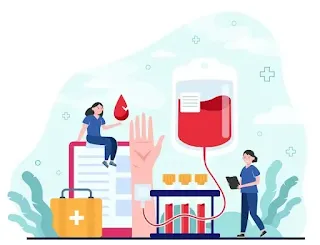The Benefits of Cord Blood Banking
One of the most significant benefits of cord blood banking is its potential to treat a wide range of blood and immune system disorders. Cord blood stem cells are capable of differentiating into various blood cell types, including red blood cells, white blood cells, and platelets, making them a versatile source for treating various medical conditions.
- Blood cancers: Cord blood stem cells have shown promising results in treating blood cancers such as leukemia and lymphoma. These stem cells can effectively replace diseased or damaged blood cells with healthy ones, leading to remission and improved survival rates.
- Sickle cell anemia: This genetic disorder causes abnormal hemoglobin production, leading to chronic pain, fatigue, and organ damage. Cord blood stem cell transplantation can potentially cure sickle cell anemia by replacing the patient's defective stem cells with healthy ones, enabling the production of normal hemoglobin.
- Aplastic anemia: This condition is characterized by the bone marrow's inability to produce enough blood cells. Cord blood stem cell transplantation can effectively replace the damaged bone marrow with healthy stem cells, restoring the body's ability to produce essential blood cells.
Additional Benefits of Cord Blood Banking
- Reduced risk of graft-versus-host disease (GVHD): GVHD is a serious complication that can occur when donor stem cells attack the recipient's body. Cord blood stem cells are less likely to cause GVHD compared to adult bone marrow stem cells due to their immature nature.
- Readily available stem cell source: Cord blood is collected at the time of birth, making it readily available for potential future use. This eliminates the need to search for and match with an unrelated bone marrow donor, which can be a time-consuming and challenging process.
- Potential for future therapies: Research is ongoing to explore the potential of cord blood stem cells in treating various non-blood disorders, such as neurological conditions, degenerative diseases, and tissue regeneration.
Considerations for Cord Blood Banking
While cord blood banking offers several potential benefits, it is important to consider the following factors before making a decision:
- Cost: Cord blood banking can be expensive, with fees for collection, processing, and storage. Not all insurance plans cover the cost, and families may need to consider out-of-pocket expenses.
- Likelihood of use: The probability of using one's own stored cord blood is relatively low, estimated to be around 1 in 400. However, cord blood donations to public banks can significantly increase the chances of finding a match for someone in need.
- Alternative stem cell sources: Adult bone marrow and peripheral blood stem cells are alternative sources for stem cell transplantation. While cord blood stem cells may offer certain advantages, these sources may be more suitable in specific circumstances.
Making an Informed Decision
The decision of whether or not to bank cord blood is a personal one that should be made after careful consideration of the potential benefits, risks, and costs. Parents should discuss their options with their healthcare provider to understand the implications and make an informed decision that aligns with their family's circumstances and preferences.
Cord blood banking offers a promising avenue for preserving stem cells for potential future medical use. With ongoing research and advancements in stem cell therapies, the potential benefits of cord blood are likely to expand in the years to come.

